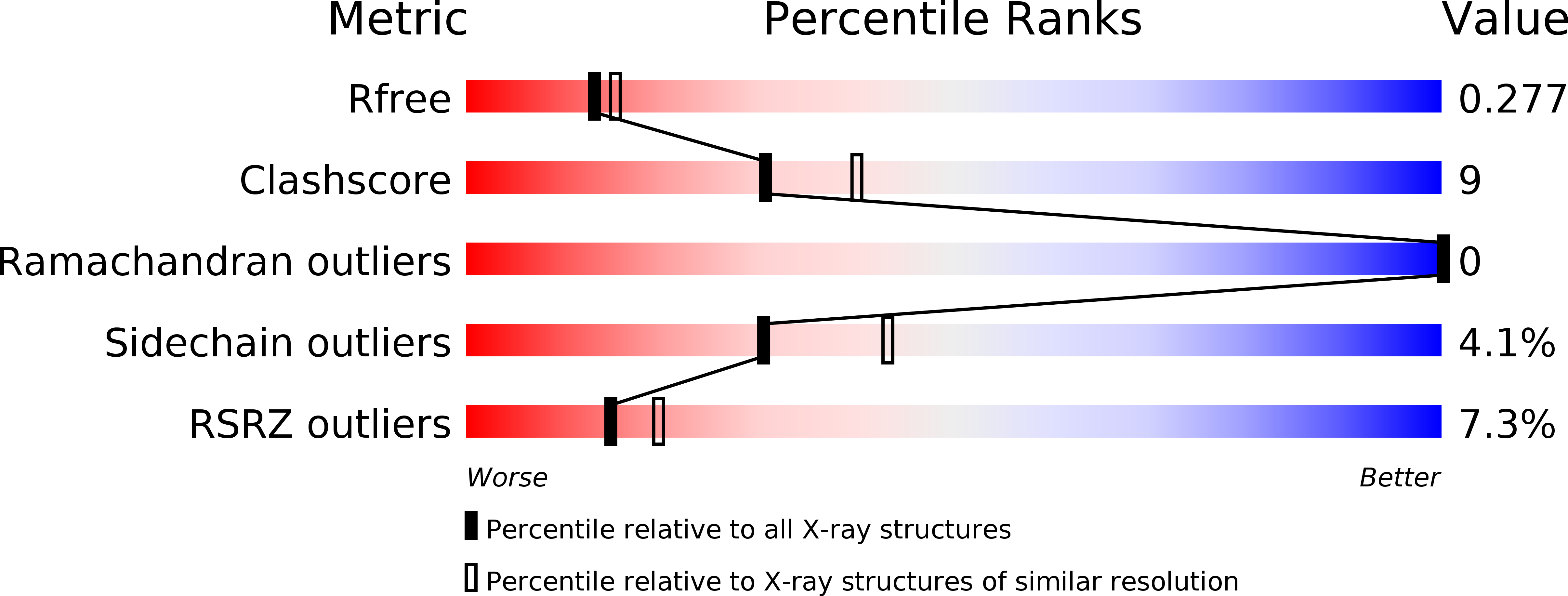Ctbp/Bars: A Dual-Function Protein Involved in Transcription Co-Repression and Golgi Membrane Fission
Nardini, M., Spano, S., Cericola, C., Pesce, A., Massaro, A., Millo, E., Luini, A., Corda, D., Bolognesi, M.(2003) EMBO J 22: 3122
- PubMed: 12805226
- DOI: https://doi.org/10.1093/emboj/cdg283
- Primary Citation of Related Structures:
1HKU, 1HL3 - PubMed Abstract:
C-terminal-binding protein/brefeldin A-ADP ribosylated substrate (CtBP/BARS) plays key roles in development and oncogenesis as a transcription co-repressor, and in intracellular traffic as a promoter of Golgi membrane fission. Co-repressor activity is regulated by NAD(H) binding to CtBP/BARS, while membrane fission is associated with its acyl-CoA-dependent acyltransferase activity. Here, we report the crystal structures of rat CtBP/BARS in a binary complex with NAD(H), and in a ternary complex with a PIDLSKK peptide mimicking the consensus motif (PXDLS) recognized in CtBP/BARS cellular partners. The structural data show CtBP/BARS in a NAD(H)-bound dimeric form; the peptide binding maps the recognition site for DNA-binding proteins and histone deacetylases to an N-terminal region of the protein. The crystal structure together with the site-directed mutagenesis data and binding experiments suggest a rationale for the molecular mechanisms underlying the two fundamental co-existing, but diverse, activities supported by CtBP/BARS in the nucleus and in Golgi membranes.
Organizational Affiliation:
Department of Physics-INFM, University of Genova, Via Dodecaneso 33, 16146 Genova, Italy.






















